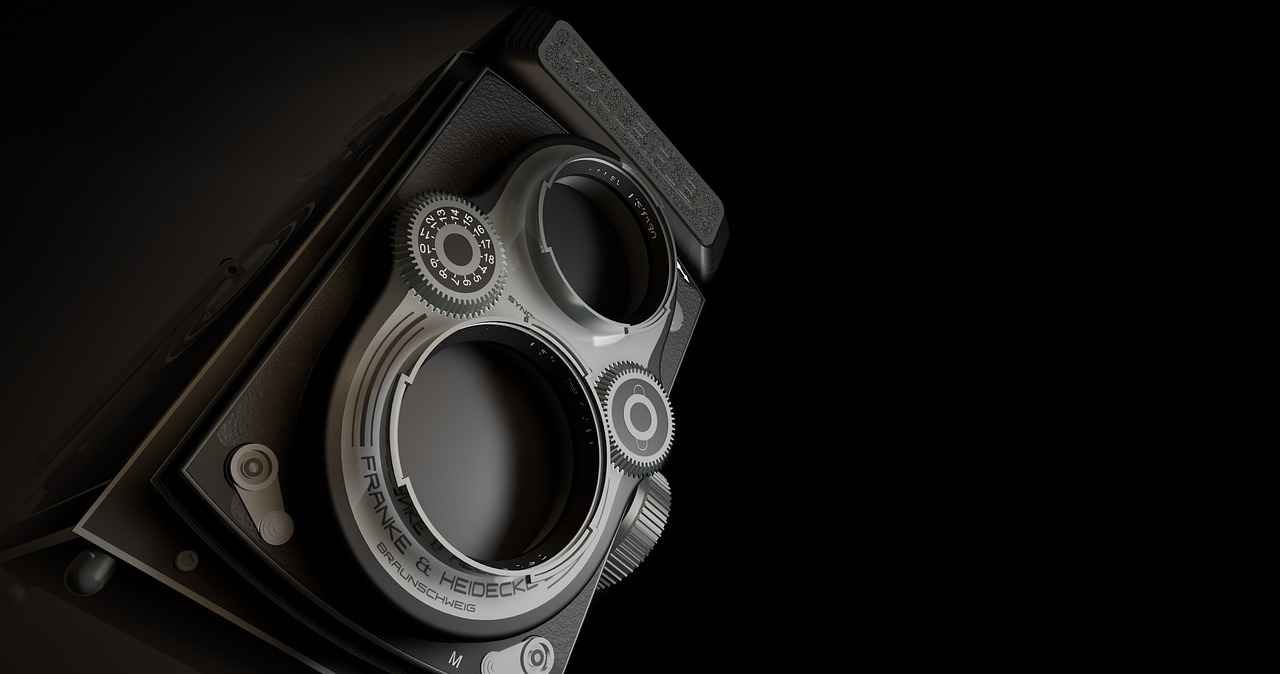This article delves into the anticipated advancements and features of action cameras expected to launch in 2025, providing insights into major brands and emerging trends in the market. As technology continues to evolve, the action camera industry is set to witness remarkable innovations that cater to both amateur and professional users alike.
What New Features Can We Expect in 2025 Action Cameras?
As we look ahead to 2025, action cameras are poised to introduce a range of innovative features. Enhanced image stabilization technology will likely be a focal point, allowing users to capture smoother footage even in the most challenging environments. Furthermore, advancements in resolution and connectivity will significantly improve the overall user experience, making it easier to share high-quality content instantly.
How Will Image Quality Improve in Upcoming Models?
Image quality remains a critical factor for action cameras. In 2025, we anticipate significant improvements in sensor technology, which will enable higher resolutions and better performance in low-light conditions. This means users can expect stunning visuals and clearer images, even in dimly lit environments.
Which Brands Are Leading the Charge in 2025?
Major brands such as GoPro, DJI, and Sony are expected to unveil their latest models in 2025. Each of these brands is likely to focus on unique features that cater to different segments of action camera enthusiasts, ensuring a wide variety of options for consumers.
What Role Will AI Play in Future Action Cameras?
Artificial Intelligence is becoming increasingly integral to technology. In 2025, action cameras may leverage AI for features like automatic scene detection, optimized settings, and enhanced editing capabilities. This will allow users to capture and edit their footage with minimal effort, making the process more enjoyable.
Are There Any Notable Trends in Action Camera Design?
Design trends are evolving alongside technology. In 2025, we may see sleeker and more compact designs that prioritize portability without sacrificing durability and functionality. This evolution is essential for adventure seekers who require reliable equipment that can withstand harsh conditions.
How Important Is Battery Life for Action Cameras?
Battery life remains a crucial aspect of action cameras. Upcoming models in 2025 are expected to feature longer-lasting batteries and improved power management systems. This enhancement will support extensive shooting sessions, allowing users to capture more content without frequent recharging.
What Connectivity Options Will Be Available?
With the rise of social media, connectivity is vital. Expect 2025 action cameras to offer enhanced wireless options, including faster Bluetooth and Wi-Fi capabilities. This will facilitate seamless sharing and live streaming, making it easier for users to connect with their audience.
Will 2025 Models Support 4K and Beyond?
As high-definition content becomes the norm, upcoming action cameras are likely to support 4K recording and potentially even higher resolutions. This caters to the growing demand for top-quality video, appealing to both casual users and professional filmmakers.
How Will Action Cameras Adapt for Extreme Conditions?
Adventure enthusiasts often use action cameras in challenging environments. In 2025, expect advancements in ruggedness and waterproofing, ensuring reliability in extreme sports and outdoor activities. These enhancements will provide users with peace of mind while pushing their limits.
What Accessories Will Complement New Action Cameras?
Accessories play a significant role in enhancing the functionality of action cameras. In 2025, we can anticipate a range of new mounts, cases, and lenses designed to maximize the potential of upcoming models. These accessories will enable users to customize their setups for various shooting scenarios.
How Will Pricing Change for Action Cameras in 2025?
Pricing strategies are crucial for market competitiveness. In 2025, we may see varied pricing tiers based on features, catering to both casual users and professional filmmakers seeking high-end solutions. This approach will ensure that a broader audience can access the latest technology.
What Are Users Saying About Future Action Cameras?
User feedback is invaluable for manufacturers. As we approach 2025, reviews and opinions from early adopters will shape the final design and functionality of the latest action cameras. This input will significantly influence purchasing decisions, ensuring that new models meet consumer expectations.

What New Features Can We Expect in 2025 Action Cameras?
As we look ahead to 2025, the action camera industry is poised for a dramatic transformation. With rapid advancements in technology, we can expect a host of innovative features that will redefine how users capture their adventures. From enhanced stabilization to improved connectivity, these developments promise to elevate the overall user experience and significantly enhance capture quality.
As technology evolves, action cameras are set to introduce innovative features that will revolutionize the way we document our experiences. One of the most anticipated advancements is in image stabilization. Expect to see next-generation stabilization systems that utilize advanced algorithms and multiple sensors to deliver incredibly smooth footage, even in the most challenging conditions.
Another area of focus will be resolution and image quality. Manufacturers are likely to push the boundaries of sensor technology, enabling action cameras to capture stunning 8K video and high-resolution still photos. This leap will not only enhance the clarity of images but also provide more flexibility for cropping and editing without losing detail.
Connectivity is also expected to see significant upgrades. With the growing importance of social media sharing, upcoming models will likely feature faster wireless capabilities, including improved Bluetooth and Wi-Fi options. This will facilitate quicker uploads and seamless live streaming, allowing users to share their adventures in real-time.
- Advanced Stabilization: Expect new algorithms for smoother footage.
- Higher Resolutions: 8K video capabilities for stunning visuals.
- Enhanced Connectivity: Faster wireless options for seamless sharing.
Moreover, the integration of artificial intelligence (AI) is anticipated to play a crucial role in the next generation of action cameras. AI could assist in features such as automatic scene detection, optimizing camera settings based on the environment, and even providing smart editing tools that simplify the post-production process for users.
In addition to these technological advancements, we can expect notable design changes. Manufacturers are likely to prioritize portability and user-friendliness, resulting in sleeker, more compact designs that do not compromise on durability. This shift will cater to adventure seekers who require reliable equipment that can withstand harsh conditions.
Battery life, a critical aspect for any action camera, will also see improvements. The 2025 models are expected to feature longer-lasting batteries and enhanced power management systems, enabling users to capture more footage without the constant worry of recharging.
Furthermore, as high-definition content becomes the norm, upcoming action cameras will likely support 4K recording and potentially even higher resolutions. This evolution will cater to the increasing demand for top-quality video, appealing to both casual users and professional filmmakers alike.
In conclusion, the action camera landscape in 2025 is set to be more exciting than ever. With advancements in stabilization, resolution, connectivity, and intelligent features, users can look forward to a new era of capturing their adventures. The combination of cutting-edge technology and user-centric design will undoubtedly enhance the overall experience, making it easier than ever to document and share life’s most thrilling moments.

How Will Image Quality Improve in Upcoming Models?
As the world of action cameras continues to evolve, image quality remains a pivotal aspect that influences consumer choices. In 2025, we can expect significant advancements in this area, driven by cutting-edge sensor technology and innovative processing capabilities. These improvements will not only enhance the overall visual experience but also cater to the increasing demands of both amateur and professional users.
One of the most anticipated changes is the introduction of higher resolution sensors. Manufacturers are likely to push the boundaries beyond the current 4K capabilities, potentially offering 6K or even 8K recording options. This leap in resolution will provide users with stunningly detailed footage, making it ideal for capturing fast-paced action and breathtaking landscapes. With these enhancements, content creators will have more flexibility in post-production, allowing for greater cropping and editing without sacrificing quality.
Moreover, advancements in low-light performance are expected to revolutionize the way action cameras function in challenging lighting conditions. New sensor technologies, such as larger pixels and improved dynamic range, will enable cameras to perform better in dimly lit environments. This means users can capture high-quality videos and images during nighttime adventures or in shadowy settings, where previous models might have struggled.
To complement these hardware advancements, we can also anticipate the integration of sophisticated image processing algorithms. These algorithms will enhance image stabilization, reduce noise, and improve color accuracy, resulting in more vibrant and true-to-life visuals. With features like HDR (High Dynamic Range), users will be able to capture scenes with a wide range of brightness levels, ensuring that both highlights and shadows are well-represented in their footage.
Furthermore, the implementation of AI-driven enhancements will play a crucial role in optimizing image quality. Future models may include intelligent scene detection that automatically adjusts settings based on the environment, ensuring optimal exposure and clarity. This feature will be particularly beneficial for those who may not have extensive photography knowledge, allowing them to achieve professional-quality results effortlessly.
Another exciting prospect is the development of multi-lens systems. By utilizing multiple lenses, action cameras could provide users with unique perspectives, such as 360-degree recording or simultaneous multi-angle shots. This innovation would not only enhance the storytelling aspect of videos but also cater to the creative desires of filmmakers and content creators looking to push the envelope.
In addition to these advancements, we can expect manufacturers to focus on user-friendly interfaces that simplify the process of adjusting settings for optimal image quality. Touchscreen controls, voice commands, and customizable presets will empower users to quickly adapt their cameras to different shooting scenarios, ensuring they never miss a moment.
As we look toward 2025, the action camera market is poised for remarkable transformations in image quality. With improvements in sensor technology, enhanced low-light performance, and the integration of AI, users can anticipate capturing breathtaking visuals like never before. These advancements will not only enrich the user experience but also elevate the standard for content creation in the action sports arena.

Which Brands Are Leading the Charge in 2025?
As we look ahead to 2025, the action camera market is poised for exciting developments, with major brands such as GoPro, DJI, and Sony set to unveil their latest models. Each of these brands is expected to showcase unique features that cater to the diverse needs of action camera enthusiasts, from adventurers capturing extreme sports to casual users documenting everyday moments.
GoPro has long been a leader in the action camera space, and in 2025, they are anticipated to push the boundaries even further. With a focus on user-friendly interfaces and enhanced stabilization technology, their upcoming models are likely to appeal to both seasoned professionals and newcomers. Rumors suggest that GoPro may introduce features like live streaming capabilities directly from the camera, allowing users to share their adventures in real-time.
DJI is recognized for its innovative technology, particularly in the realm of drones and gimbals. In 2025, they are expected to incorporate advanced aerial features into their action cameras, making them ideal for dynamic shooting scenarios. This could include automatic tracking and gesture control, which would allow users to capture footage hands-free, enhancing the overall shooting experience. DJI’s commitment to image quality is also likely to shine through with improved sensors and enhanced low-light performance.
Sony’s action cameras are known for their exceptional image quality and audio performance. As we approach 2025, Sony is expected to introduce models that leverage their expertise in sensor technology and video processing. Anticipated features may include 4K recording at higher frame rates and advanced autofocus systems, catering to content creators who prioritize cinematic quality. Additionally, Sony might focus on integrated editing tools that simplify the post-production process for users.
Each of these brands is likely to target specific user segments with tailored features. For example:
- GoPro: Focused on extreme sports enthusiasts, with rugged designs and high durability.
- DJI: Aimed at aerial photographers and videographers, emphasizing stability and advanced technology.
- Sony: Targeting content creators and vloggers, with superior image quality and audio capabilities.
As these brands prepare to launch their new action cameras, user feedback will be crucial in refining their designs and features. Companies are increasingly reliant on insights from early adopters to enhance functionality and address common pain points. This engagement not only fosters brand loyalty but also ensures that new models meet the evolving demands of consumers.
The competition among GoPro, DJI, and Sony is vital for driving innovation within the action camera market. As these brands strive to outdo each other, users can expect a continuous stream of technological advancements that enhance performance, usability, and overall value. This competitive landscape not only benefits consumers with better products but also encourages brands to listen closely to their audience’s needs and desires.
In summary, the action camera landscape in 2025 promises to be vibrant and diverse, with major players like GoPro, DJI, and Sony leading the charge. By focusing on unique features tailored to different user segments, these brands are set to redefine the way we capture and share our adventures.

What Role Will AI Play in Future Action Cameras?
As we move towards 2025, the influence of Artificial Intelligence (AI) on technology continues to grow, especially in the realm of action cameras. These devices, which have become essential for adventure enthusiasts and content creators alike, are poised to undergo a remarkable transformation driven by AI capabilities. This article delves into the various ways AI is expected to enhance action cameras, making them more user-friendly and efficient.
AI is set to revolutionize the user experience by introducing features that simplify the process of capturing high-quality footage. For instance, automatic scene detection will enable cameras to recognize different environments, such as beaches, mountains, or urban settings, and adjust settings accordingly. This means users can focus on their activities without worrying about manual adjustments.
With AI, action cameras can analyze the scene in real-time, optimizing settings like exposure, white balance, and color saturation. This feature ensures that users capture the best possible footage, regardless of the lighting conditions. Furthermore, AI can learn from past shooting experiences, continually improving its performance based on user preferences.
Editing can often be a time-consuming task, but AI is set to streamline this process significantly. In 2025, we can expect action cameras to come equipped with advanced AI editing tools that can automatically create highlight reels, suggest edits, and even apply filters based on the content of the footage. This functionality will save users valuable time and enhance their creative output.
Stabilization is crucial for capturing smooth footage, especially during high-action activities. AI algorithms can analyze motion patterns and compensate for unwanted shakes and jitters, resulting in remarkably stable video. This advancement will be particularly beneficial for extreme sports enthusiasts who rely on action cameras to document their adventures.
AI can also play a role in real-time data analysis, providing users with insights during their activities. For example, action cameras may display metrics such as speed, altitude, and heart rate, allowing users to monitor their performance while they shoot. This feature will appeal to athletes and adventurers looking to track their progress.
As connectivity becomes increasingly important, AI will enhance how users share their content. Expect action cameras to feature smarter connectivity options that allow for seamless uploads to social media platforms. AI can analyze the best moments from a video and suggest the most shareable clips, making it easier for users to engage with their audience.
The integration of AI will also influence the design and functionality of action cameras. Manufacturers may prioritize features that complement AI capabilities, such as improved sensors and faster processors. This evolution will likely lead to more compact and user-friendly devices that cater to the needs of modern users.
The potential of AI in action cameras extends beyond mere functionality. As these devices become smarter, they will open up new avenues for content creation. Users will be empowered to experiment with unique filming techniques and storytelling methods, making action cameras not just tools for capturing moments, but also creative partners in the filmmaking process.
In conclusion, the role of AI in future action cameras is set to be transformative. With features that enhance user experience, improve image quality, and streamline editing processes, AI will empower users to capture and share their adventures like never before. As we approach 2025, the integration of AI will undoubtedly redefine the action camera landscape.

Are There Any Notable Trends in Action Camera Design?
As we look ahead to 2025, the landscape of action camera design is set to undergo significant transformations, driven by advancements in technology and changing consumer preferences. Design trends are evolving alongside technology, leading to an exciting future for action cameras.
In 2025, we can expect action cameras to showcase sleeker and more compact designs, focusing on portability without compromising on durability. This is especially important for adventure seekers who require equipment that can withstand the rigors of outdoor activities.
- Minimalist Aesthetics: The trend toward minimalism is becoming increasingly popular, with manufacturers aiming for designs that are not only functional but also visually appealing. Expect to see action cameras with smooth lines and fewer buttons, enhancing their overall look.
- Lightweight Materials: The use of advanced materials such as carbon fiber and high-strength plastics will allow for lighter designs. This means users can carry their cameras effortlessly during activities like hiking or biking.
- Modular Designs: As customization becomes more important, modular designs that allow users to swap out components for different functionalities are likely to gain traction. This could include interchangeable lenses or battery packs.
- Integrated Mounting Systems: To enhance usability, future models may feature built-in mounting systems, eliminating the need for bulky external mounts. This will streamline the user experience and make it easier to capture action shots.
Furthermore, the emphasis on durability will not be overlooked. Manufacturers are expected to enhance waterproofing and shock resistance, ensuring that action cameras can perform in extreme conditions. This is essential for users who engage in sports like surfing, skiing, or mountain biking.
Another significant trend is the incorporation of smart technology. In 2025, we anticipate action cameras equipped with sensors that automatically adjust settings based on the environment. This means users can focus on capturing their adventures without worrying about manual adjustments.
| Design Feature | Benefits |
|---|---|
| Compact Size | Increased portability for users on the go |
| Lightweight Materials | Reduced fatigue during long shoots |
| Built-in Mounts | Simplified setup and reduced gear load |
| Smart Technology | Enhanced user experience with automatic adjustments |
As we move closer to 2025, the integration of user feedback will play a crucial role in shaping these design trends. Manufacturers will likely engage with their communities to understand what features are most desired, ensuring that the final products meet the needs of both casual users and professional filmmakers.
In conclusion, the action camera market is poised for an exciting evolution in design. With a focus on portability, durability, and user-friendly features, we can expect 2025 models to cater to the dynamic needs of adventure enthusiasts. As technology continues to advance, action cameras will not only capture moments but also enhance the overall experience of outdoor activities.

How Important Is Battery Life for Action Cameras?
When it comes to action cameras, battery life is one of the most critical features that users consider. As outdoor enthusiasts and content creators venture into longer shooting sessions, having a reliable battery becomes essential. In 2025, we can expect significant advancements in battery technology that will address these user needs.
Battery life directly impacts the usability of action cameras. Users often engage in activities that require extended filming, such as hiking, diving, or skiing. A camera that runs out of power in the middle of an adventure can lead to missed moments and frustration. Therefore, manufacturers are prioritizing longer-lasting batteries in their upcoming models.
Anticipated advancements include improved battery chemistry that allows for higher energy density. This means that future models could be lighter while offering more power. Additionally, enhanced power management systems will optimize battery usage, extending the operational time even further. For instance, smart technology may allow the camera to enter a low-power mode when not in use, preserving battery life during shooting breaks.
With better battery life, users can engage in longer shooting sessions without the constant worry of recharging. This improvement will not only enhance the user experience but also encourage users to explore more challenging environments, knowing their equipment can keep up. Furthermore, quick charge capabilities are expected to be integrated, allowing users to recharge their cameras rapidly during short breaks.
Despite advancements, challenges remain. Manufacturers must balance battery size, weight, and longevity. A larger battery may provide more power but can also add unnecessary bulk. Additionally, extreme temperatures can impact battery performance, which is a significant consideration for action cameras used in various climates. As such, developing batteries that can withstand harsh conditions while maintaining longevity is crucial.
- Extended shooting time allows for capturing more content.
- Increased reliability during demanding activities.
- Reduced need for carrying multiple spare batteries.
- Improved overall satisfaction with the device.
User feedback is invaluable in shaping the future of action cameras. Many users express a desire for cameras that can last through an entire day of shooting without needing a recharge. As brands gather insights from early adopters, we can expect the 2025 models to reflect these demands, ultimately leading to more user-friendly designs.
Absolutely. As users become more aware of battery performance, it will likely become a key factor in their purchasing decisions. Brands that can showcase superior longevity and efficiency in their batteries will have a competitive edge in the market. This shift will encourage all manufacturers to prioritize battery life in their designs, leading to better products for consumers.
In conclusion, as we look towards 2025, the emphasis on battery life in action cameras will undoubtedly shape the future landscape of this technology. Innovations in battery technology will not only enhance user experience but also expand the possibilities for adventure and creativity.

What Connectivity Options Will Be Available?
As we look ahead to 2025, the evolution of action cameras is poised to revolutionize how we capture and share our adventures. One of the most significant advancements will undoubtedly be in connectivity options. With the rise of social media and the increasing demand for instant sharing, manufacturers are expected to enhance wireless capabilities dramatically.
In 2025, action cameras are anticipated to feature faster Bluetooth and Wi-Fi capabilities, significantly improving the speed and reliability of data transfer. This means users can expect seamless sharing of their high-quality videos and photos directly to social media platforms with minimal lag. Imagine being able to upload stunning 4K clips while still on the mountain or at the beach, capturing the moment and sharing it instantly with friends and followers.
Live streaming has become a crucial aspect of content creation, especially among adventure enthusiasts. Upcoming models in 2025 are likely to incorporate advanced features that support live streaming directly from the camera to various platforms. This capability will allow users to broadcast their experiences as they happen, engaging with their audience in real time. Enhanced connectivity will ensure that the streaming quality remains high, even in challenging environments.
As connectivity improves, we can also expect action cameras to become more compatible with a variety of smart devices. Users will likely be able to control their cameras through smartphones or tablets, adjusting settings and starting recordings from a distance. This feature will be particularly beneficial for those who engage in extreme sports, allowing them to set up shots without needing to be right next to the camera.
Another exciting trend is the potential for cloud integration. In 2025, action cameras may allow users to upload their content directly to cloud storage services. This will not only provide extra space for storing high-resolution videos and images but also enable easier access and sharing across multiple devices. Users can enjoy the freedom of not worrying about running out of storage space during their adventures.
With increased connectivity comes the need for enhanced security measures. Future action cameras are expected to implement robust security protocols to protect users’ data and privacy. Features such as encrypted connections and secure login options will become standard, ensuring that users can share their content without fear of unauthorized access.
The advancements in connectivity will have profound implications for content creators. With faster upload speeds, live streaming capabilities, and improved compatibility with smart devices, creators will have more tools at their disposal to produce high-quality content. This will enable them to engage with their audience more effectively and creatively, setting the stage for a new era of content creation.
Ultimately, the enhanced connectivity options expected in 2025 will significantly improve the overall user experience. Whether it’s sharing a breathtaking moment from a mountain peak or live streaming a thrilling descent on a bike, users will benefit from faster, more reliable, and more versatile action cameras. These innovations will empower users to capture, share, and relive their adventures like never before.

Will 2025 Models Support 4K and Beyond?
As we move towards 2025, the landscape of action cameras is set to undergo significant transformations. With the increasing demand for high-definition content, upcoming models are expected to not only support 4K recording but also venture into even higher resolutions. This evolution caters to a growing audience that values top-quality video, whether for personal use, professional filmmaking, or social media sharing.
The shift towards 4K resolution has been driven by several factors. First and foremost, the clarity and detail provided by 4K footage are unmatched, allowing users to capture stunning visuals that can be enjoyed on modern high-definition screens. Additionally, as streaming platforms and social media continue to adopt higher resolution formats, the demand for cameras that can produce such content is on the rise.
- Enhanced Clarity: 4K recording offers four times the resolution of 1080p, resulting in sharper images.
- More Editing Flexibility: Higher resolution footage allows for greater cropping and stabilization options during post-production without losing quality.
- Future-Proofing: As technology advances, having the capability to record in 4K ensures that footage remains relevant and compatible with future display technologies.
While the benefits are substantial, there are challenges associated with 4K recording. These include:
- Increased Storage Needs: 4K video files are significantly larger, requiring more storage space and faster memory cards.
- Battery Life: Recording in higher resolutions can drain battery life more quickly, necessitating improvements in power management.
- Processing Power: Action cameras must be equipped with advanced processors to handle the demands of 4K video, which may increase costs.
Looking ahead, some manufacturers are exploring the possibility of 8K recording in action cameras. Although still in its infancy, 8K technology promises even greater detail and clarity. However, it also brings similar challenges as 4K, including the need for robust hardware and ample storage solutions.
Leading brands such as GoPro, DJI, and Sony are likely to embrace these advancements. They are expected to integrate 4K and beyond capabilities into their latest models, along with features like enhanced stabilization, improved low-light performance, and user-friendly interfaces to attract both amateur and professional users.
When selecting a 4K action camera, users should consider:
- Resolution and Frame Rate: Ensure the camera can record at various frame rates for different shooting conditions.
- Stabilization Technology: Look for models with advanced stabilization features to ensure smooth footage during action-packed activities.
- Battery Life: Choose cameras with long-lasting batteries or options for external power sources.
- Connectivity: Evaluate the camera’s connectivity options for easy sharing and streaming.
As we approach 2025, the expectation for action cameras to support 4K and beyond is not just a trend but a necessity. With the right advancements and user considerations, these cameras will continue to redefine how we capture and share our adventures.

How Will Action Cameras Adapt for Extreme Conditions?
As adventure sports continue to gain popularity, the demand for reliable and durable action cameras is on the rise. In 2025, we can expect significant innovations aimed at enhancing the performance of these devices in extreme conditions. Action cameras are not just tools for capturing moments; they are essential for documenting thrilling experiences in challenging environments. Let’s explore how these cameras will adapt to meet the needs of adventure enthusiasts.
In 2025, manufacturers are likely to introduce advanced materials that offer greater durability against impacts, scratches, and abrasions. Expect to see action cameras made from reinforced polycarbonate and aluminum alloys, which provide superior protection without adding excessive weight. These materials will ensure that cameras can withstand the rigors of extreme sports such as rock climbing, mountain biking, and snowboarding.
Waterproofing is crucial for any action camera used in aquatic environments. The models released in 2025 are expected to feature enhanced waterproofing technologies, allowing them to function effectively at greater depths. Innovations such as seamless construction and advanced sealing techniques will help prevent water ingress, making these cameras suitable for activities like scuba diving and surfing.
Extreme temperatures can affect the performance of electronic devices. Future action cameras will likely incorporate temperature-resistant components that can operate in both scorching heat and freezing cold. This adaptation will be essential for adventurers who explore diverse environments, from the arctic tundra to desert landscapes.
Battery life is a critical concern for action camera users, especially during extended outdoor activities. In 2025, we can anticipate the introduction of high-capacity batteries designed to endure extreme conditions. These batteries will not only last longer but also function reliably in fluctuating temperatures, ensuring that users can capture every moment without interruptions.
Manufacturers are increasingly relying on user feedback to refine their products. In 2025, we can expect action camera designs that are heavily influenced by the experiences of adventurers. User insights will help shape features such as ergonomic grips, intuitive controls, and customizable settings that cater specifically to extreme sports enthusiasts.
To maximize versatility, future action cameras will likely come with a range of innovative mounting solutions. These mounts will be designed to securely attach to various surfaces, including helmets, bikes, and surfboards, ensuring stable footage even in high-impact situations. The introduction of quick-release systems will also allow users to switch mounts effortlessly.
In an age where sharing experiences is paramount, connectivity features will evolve significantly. The 2025 action cameras are expected to include enhanced wireless capabilities, allowing users to connect seamlessly to their smartphones and computers. This will enable quick sharing of high-quality footage directly to social media platforms, ensuring that adventure enthusiasts can showcase their experiences in real-time.
Accessories play a vital role in enhancing the functionality of action cameras. In 2025, we can expect a variety of rugged accessories designed specifically for extreme conditions. This includes protective cases, weather-resistant bags, and specialized lenses that enhance the camera’s capabilities while ensuring durability.
As we look forward to 2025, it’s clear that action cameras will undergo significant transformations to meet the demands of adventure enthusiasts. With advancements in ruggedness, waterproofing, and user-centric design, these cameras will continue to be indispensable tools for capturing unforgettable moments in the great outdoors.

What Accessories Will Complement New Action Cameras?
As action cameras continue to evolve, the right accessories can significantly enhance their functionality and usability. In 2025, we can expect a plethora of innovative accessories designed to complement the latest models from leading brands. These accessories not only maximize the potential of the cameras but also cater to various shooting scenarios and user preferences.
Mounts are essential for securing action cameras in various environments. In 2025, we anticipate the introduction of specialized mounts that cater to specific activities. For instance:
- Helmet mounts for cyclists and motorcyclists.
- Chest mounts for hands-free shooting during extreme sports.
- Selfie sticks that extend to capture wider angles and group shots.
These mounts will be designed with improved stability and ease of use, ensuring that users can capture their adventures without hassle.
Protection is paramount for action cameras, especially in rugged environments. Upcoming models will likely feature durable cases that offer:
- Waterproof capabilities for underwater adventures.
- Shockproof designs to withstand drops and impacts.
- Temperature resistance for extreme weather conditions.
These advancements will ensure that users can take their cameras into challenging environments without fear of damage.
As action cameras push the boundaries of image quality, lens accessories will play a crucial role. In 2025, expect:
- Wide-angle lenses for capturing expansive landscapes.
- Macro lenses for detailed close-up shots.
- ND filters to manage light exposure during bright conditions.
These lenses will allow users to experiment creatively and elevate their photography and videography skills.
Battery life is a common concern among action camera users. In 2025, innovative power solutions are expected, including:
- Extended battery packs for longer shooting sessions.
- Solar chargers for outdoor enthusiasts.
- Quick-charge technology to minimize downtime.
These advancements will enable users to capture more footage without worrying about running out of power.
Editing is a vital part of the action camera experience. In 2025, we can expect accessories that facilitate easier editing, such as:
- Mobile editing apps that sync seamlessly with camera footage.
- Editing software that incorporates AI for automated enhancements.
- External storage options for easy file management.
These tools will streamline the post-production process, allowing users to focus on creativity rather than technical hurdles.
In conclusion, the future of action camera accessories looks promising, with innovations designed to enhance functionality, durability, and user experience. As we approach 2025, these advancements will empower users to capture their adventures in more dynamic and creative ways than ever before.
How Will Pricing Change for Action Cameras in 2025?
As the action camera market continues to evolve, understanding the pricing strategies for 2025 is essential for both consumers and manufacturers. With advancements in technology and increased competition, pricing will likely reflect a range of features tailored to different user needs. This article delves into the anticipated changes in pricing structures for action cameras in 2025, highlighting how these changes will impact both casual users and professional filmmakers.
In 2025, we may witness a shift towards tiered pricing models that cater to various customer segments. This could include:
- Entry-Level Models: Affordable options designed for casual users and beginners.
- Mid-Range Models: Cameras with enhanced features for enthusiasts who seek better performance.
- High-End Models: Premium options equipped with advanced technology for professional filmmakers.
The integration of innovative features will significantly impact the pricing of action cameras. For instance, models equipped with AI technology for automatic scene detection or enhanced stabilization will likely fall into a higher price bracket. Conversely, basic models without these features will remain more budget-friendly, allowing users to choose based on their specific needs.
As major brands like GoPro, DJI, and Sony continue to innovate, market competition will drive pricing strategies. Manufacturers may offer promotional deals, bundles, or seasonal discounts to attract customers. This competitive landscape will ensure that consumers have access to a variety of options at different price points, making high-quality action cameras more accessible than ever.
Another trend to consider is the rise of subscription services associated with action cameras. In 2025, some brands may offer subscription models that provide users with cloud storage, editing tools, and exclusive content. This could lead to lower upfront costs for the camera itself while generating ongoing revenue for manufacturers.
User feedback is crucial in shaping product offerings and pricing structures. As we approach 2025, manufacturers will likely analyze reviews and suggestions from early adopters to adjust their pricing strategies. This responsiveness to consumer needs will help ensure that prices reflect both the value of the product and the expectations of the market.
Economic conditions, such as inflation and shifts in consumer spending habits, will also play a role in pricing strategies. Manufacturers may need to adjust their prices based on production costs, supply chain challenges, and overall market demand. Keeping an eye on these economic indicators will be essential for both manufacturers and consumers when considering purchases in 2025.
As brands look to attract more customers, we can expect to see an increase in discounts and promotional offers. Seasonal sales, trade-in programs, and loyalty discounts may become more prevalent, allowing consumers to acquire high-quality action cameras at reduced prices.
Ultimately, consumer preferences will dictate pricing strategies. As users become more educated about technology and features, they will demand products that offer the best value for their investment. Brands that successfully align their pricing with consumer expectations will likely thrive in the competitive action camera market of 2025.

What Are Users Saying About Future Action Cameras?
As we move closer to 2025, the landscape of action cameras is evolving rapidly, driven significantly by user feedback. User insights are becoming a cornerstone for manufacturers, influencing everything from design to functionality. With the rise of social media and the demand for high-quality content, understanding what early adopters think is crucial for brands aiming to stay competitive.
The voice of the consumer is louder than ever, and manufacturers are paying attention. Early adopters of action cameras often share their experiences on various platforms, providing invaluable feedback that can lead to significant improvements in future models. Here are some key areas where user feedback is shaping the development of upcoming action cameras:
- Design Preferences: Users are increasingly favoring compact and lightweight designs that are easy to carry during adventures. Feedback suggests that a more ergonomic shape and intuitive controls enhance usability.
- Image and Video Quality: Many users are vocal about their desire for higher resolution capabilities. As 4K becomes the standard, enthusiasts are now looking for features that support 8K recording, especially for professional use.
- Stabilization Technology: Feedback indicates a strong demand for improved image stabilization systems. Users want to capture smooth footage even in the most challenging conditions, so brands are focusing on advanced stabilization technologies.
- Battery Life: Users often express frustration over battery performance. Feedback has highlighted the need for longer-lasting batteries and faster charging options, which are critical for extended shooting sessions.
- Connectivity Features: As social media sharing becomes more prevalent, users are looking for better connectivity options. Feedback suggests that faster Bluetooth and Wi-Fi capabilities are essential for seamless uploads and live streaming.
Moreover, user reviews have highlighted the importance of durability. Action cameras are primarily used in extreme conditions, and users expect their devices to withstand shocks, water, and dust. Manufacturers are responding by enhancing the ruggedness of their products, ensuring they can endure the elements.
In addition to these technical features, users are also discussing the accessories that complement action cameras. Many enthusiasts are looking for versatile mounts, cases, and lenses that enhance the functionality of their cameras. Feedback indicates that brands that offer a range of compatible accessories are more likely to attract loyal customers.
The role of artificial intelligence in future action cameras is another topic of interest among users. Many are excited about the potential for AI to automate settings based on scene detection, optimize video quality, and even assist in editing. This not only enhances the user experience but also makes high-quality content creation accessible to a broader audience.
As we approach 2025, it’s clear that user feedback will continue to play a pivotal role in shaping the future of action cameras. Manufacturers that actively engage with their customers and incorporate their insights into product development will likely lead the market. The voices of early adopters will not only influence design and functionality but also drive innovation in the action camera industry.
Frequently Asked Questions
- What new features can we expect in 2025 action cameras?
In 2025, action cameras are set to unveil exciting new features such as enhanced stabilization, higher resolutions, and improved connectivity options. These advancements aim to elevate the user experience and capture stunning visuals like never before!
- How will image quality improve in upcoming models?
With advancements in sensor technology, we can anticipate significant improvements in image quality for 2025 models. Expect higher resolutions and better performance in low-light conditions, ensuring you capture breathtaking moments in any environment.
- Which brands are leading the charge in 2025?
Major brands like GoPro, DJI, and Sony are expected to dominate the action camera market in 2025. Each brand will likely introduce unique features tailored to various types of users, from casual adventurers to professional filmmakers.
- What role will AI play in future action cameras?
Artificial Intelligence is becoming a game changer! In 2025, expect action cameras to utilize AI for automatic scene detection, optimized settings, and enhanced editing capabilities, making it easier for users to capture and share their adventures.
- How important is battery life for action cameras?
Battery life is essential for action cameras, especially for those long shooting sessions. The 2025 models are expected to feature longer-lasting batteries and improved power management systems to keep you shooting without interruptions.
